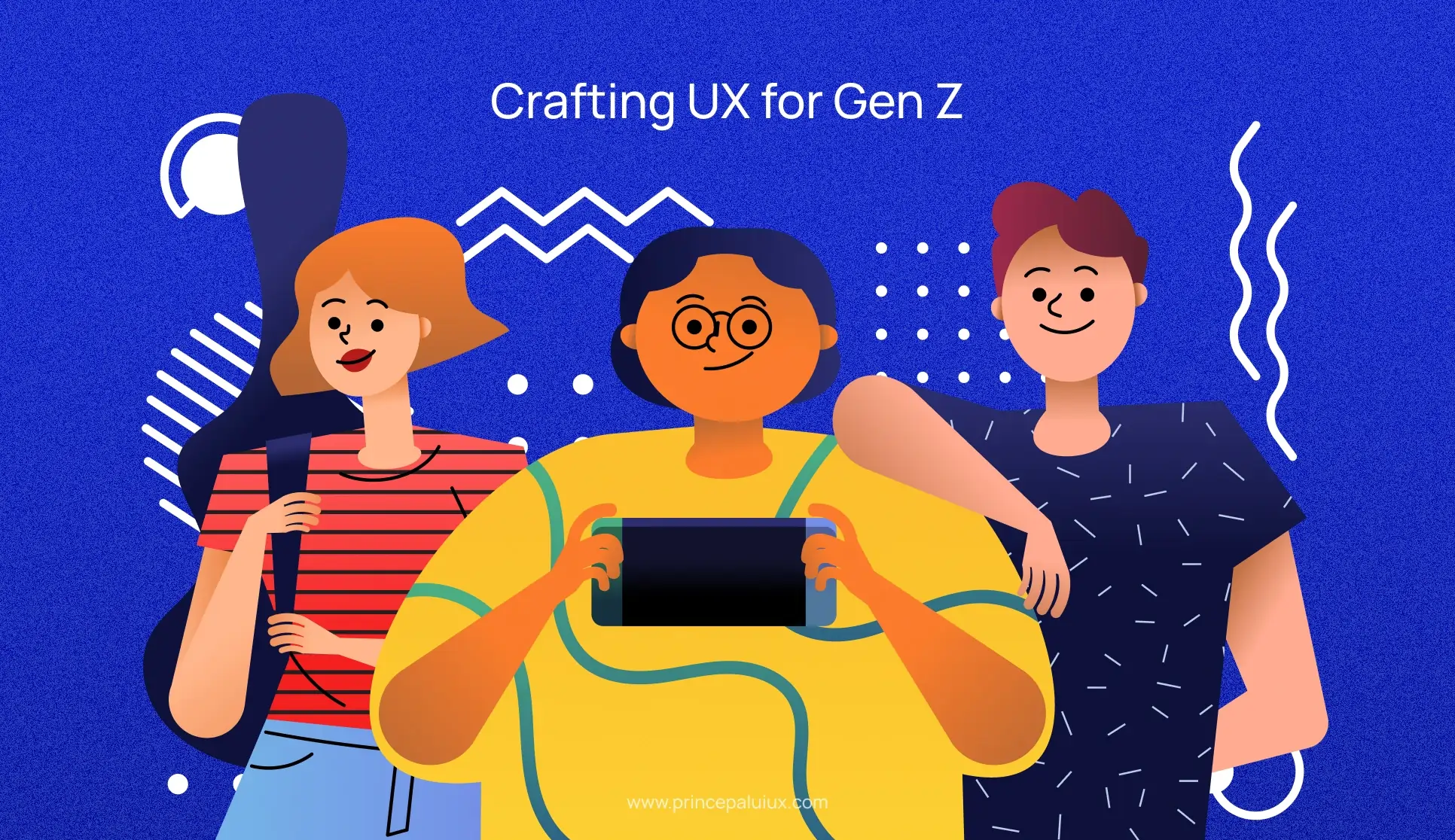Generation Z—born between 1997 and the early 2012s—reshapes culture, technology, and consumer behavior. So, designing for Gen Z is challenging for a UX UI designer.
Often misunderstood as a generation glued to social media with short attention spans, their habits and values run deeper.
Crafting UX Design for Gen Z: Decoding Their Expectations
Let’s cut through the noise and explore how to design experiences that resonate with this influential group.
Who Is Gen Z?
Gen Z is the most diverse generation in history, spanning race, ethnicity, gender identity, and cultural perspectives. They prioritize inclusivity, fairness, and social responsibility over material possessions. While the oldest are entering their late 20s (and the workforce), the youngest are still in middle school. Despite stereotypes labeling them as “passive” or “disengaged,” research reveals a proactive generation that is socially conscious and eager to make an impact.
Key Traits:
- Values-Driven: Principles like sustainability, equity, and work-life balance guide their decisions.
- Experience-Focused: They value memorable moments—travel, events, learning—over owning things.
- Skeptical of Brands: They distrust traditional advertising and seek validation from peers, influencers, and authentic reviews.
Myths vs. Reality
Myth 1: “Gen Z is homogenous.”
Reality: They’re deeply diverse, with varied opinions, backgrounds, and beliefs. A one-size-fits-all approach won’t work.
Myth 2: “They’re passive and apathetic.”
Reality: Gen Z is action-oriented. From climate activism to social justice, they drive change and demand accountability.
Hey, Gen Z startup founders!
My SaaS Product Design Services are all about crafting real, user-focused experiences that vibe with your audience.
I ditch the clutter, prioritize authenticity, and design mobile-only flows that reflect your values—think sustainability and inclusivity.
From bold visuals to seamless social logins, I’ll help you captivate your crowd with honest, engaging products that don’t just look good but feel right.
Let’s build something raw and impactful that your users will rave about. Check out my portfolio and see how I can level up your startup!
How Gen Z Behaves (And What It Means for Design)
1. Mobile-Only, Not Just Mobile-First
Many Gen Z users only access the internet via smartphones. Apps and websites must prioritize mobile-friendly design:
- Simplify navigation
- Optimize load times.
- Use vertical formats for videos and stories
- Keep paragraphs short—50 words max
- Use simple sentences—20 words or less
- Design for mobile: make it brief and clear
- Add a plain summary, even for legal stuff
- Start with the main point, then add details
- Cutting junk and fluff works best
2. YouTube > Google
For many, YouTube is the go-to search engine. They prefer video tutorials, reviews, and unboxings over text-based results.
- Design Tip: Invest in video content. Make it skimmable, engaging, and informative.
3. Trust Is Earned, Not Given
Gen Z trusts friends, influencers, and verified reviews—not branded ads. They’re savvy but not immune to misinformation.
- Design Tip: Highlight user-generated content (UGC) and honest testimonials. Avoid overly polished ads.
4. Live in the Moment
Raised on TikTok and Instagram Stories, they expect real-time updates and have little patience for delays.
- Design Tip: Keep them engaged with live streams, countdowns, or progress bars.
5. Sustainability Isn’t Optional
Eco-friendly practices, recycling programs, and ethical labor matter. Greenwashing? They’ll call it out.
- Design Tip: Be transparent. Share your sustainability journey, even if it’s imperfect.
6. Social Logins Over Forms
Filling out forms? No thanks. Social logins (like “Sign in with Google”) reduce friction.
- Design Tip: Offer social login options—but respect privacy concerns.
7. Cookie Banners? Ignored.
Most Gen Zers dismiss cookie pop-ups without reading them.
- Design Tip: Minimize intrusive banners or find creative ways to handle data consent.
8. Subtitles On, Volume Off
They watch videos with the sound off. Captions aren’t optional.
- Design Tip: Auto-generate subtitles and make them customizable.
Design Principles for Gen Z
Authenticity Over Perfection
Gen Z craves realness. Show real people using your product—flaws and all. Avoid AI-generated fakery.
Cut the Clutter
Remove unnecessary steps, ads, or jargon. Prioritize simplicity and speed.
Engage, Don’t Lecture
Tell stories that challenge them. Encourage critical thinking with interactive quizzes, polls, or behind-the-scenes content.
Reward Intrinsic Motivation
Instead of pushing discounts (extrinsic rewards), align with their values. For example, “Buy this reusable bottle—help reduce plastic waste.”
The Bottom Line
Gen Z isn’t waiting for the future—they’re building it. To connect with them:
- Be real. Ditch the corporate speak.
- Be quick. Respect their time.
- Be meaningful. Align with their values.
Authenticity is your superpower in a world flooded with AI-generated content and hollow marketing. Gen Z will notice—and reward—brands that keep it honest.
Design for Gen Z by listening, adapting, and staying humble. They’re not just the future; they’re the present.
Useful Resources
- Designing for Gen Z, by Designlab
- Designing For Gen Z (Case Study), by Michelle Winchester
- Intrinsic vs. Extrinsic Motivation, by Paula Gomes
- Shopping Habits For Gen Z, by Sara Karlovitch
- 10 Gen Z Insights To Improve Your CX, by Telus
- Millennials vs. Gen Z Expectations, by Zendesk
Thanks a ton for your support, everyone—enjoy designing! 🎉🥳
Wishing you tons of positivity, hope, and good vibes!
Happy designing, and thanks for reading! ❤️
